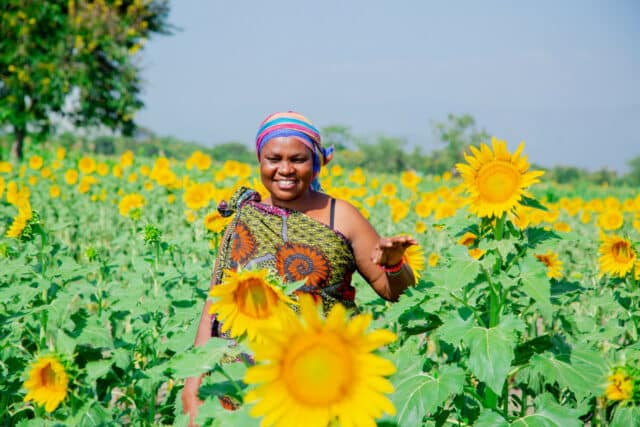Expert view
15 February 2019
Growing Futures – A Lesson in Sustainability

By Ruth Wells, Member Networks Manager at Advance HE, an educationalist with a strong interest in agriculture. Ruth recently visited Farm Africa’s projects in Kenya as part of a group of British farmers and farming experts.
My background is in sustainability, with a particular focus on agriculture and a career in education.
There are three elements to sustainability which must be considered and actioned to make projects, decisions or strategies sustainable; these are environmental, economic and social factors. I have drilled these elements into the hundreds of students I’ve taught, they are part of my everyday thinking and always feature in the decisions I make. Consequently, it was completely natural for me to be looking for these elements in the Farm Africa projects we visited in Kenya.
The trip focused on two main projects: Growing Futures and Kenya Market-led Aquaculture Programme (KMAP).

It was obvious from the moment we arrived at the first village that the Growing Futures project was having the exact impact that was needed. In every Growing Futures project we visited the fields were immaculate – long rows of evenly spaced plants, which were exactly the same size and not a weed in sight, which is impressive and the fields were ploughed with oxen, planted, weeded, irrigated and harvested by hand.

It struck the entire group how similar the challenges were facing UK and Kenyan based farmers: climate change, co-operation between farmers, rural to urban migration by young people, producing products required by the market and climate change.
The aim of the Growing Futures project is to help mitigate against some of those challenges by supporting young farmers’ move from subsistence agriculture to market-led, teach them about financial planning, increase profit margins and production levels.
We saw farms that were at every stage of this project from the newly entered to those who were nearing the end of their three years of support. In every case, the farmers had taken the education they had been given and used it to grow crops that fitted the market requirements.

- Economic sustainability – the profits of green beans are higher than that of the previous maize harvest in the same time period and farmers have been taught (and are putting it into practice) financial planning and investment in their farms. One such example being Joseph (pictured above), who had invested in a solar-powered pump for irrigating his crops.
- Environmental sustainability – the green bean plants form nodules on their roots, which house symbiotic soil bacteria called rhizobia, these fix atmospheric nitrogen into a form usable by plants (and animals), which benefits both the bean themselves and any following crops.
- Social sustainability – from Rachel, the farmer who could afford to send her three children to boarding school, to Susan (pictured below), the picker whose income has increased from US $2 for a day’s work to an average of US $6, which meant her children could attend school every day rather than every other term as the work was guaranteed and regular.

At times, the cultural differences between Kenya and the UK made me uncomfortable in that they challenged my own moral and ethical beliefs, but one thing that will stay with me forever is talking to a group of women at a KMAP fish farm in Kisumu and accidentally giving them a lesson in feminism.
I was extolling the importance of education and insisting they teach their sons that the must treat women as equals, not workhorses. At the end of the visit, one of the women proudly stood up and gave a speech asking everyone to remember the essential role women play in making the project (and society) work, to which we applauded and I left feeling we might have started a revolution!

To fund the trip to Kenya I used the inheritance my Nan had left me. She was a farmer’s wife, used the ‘make do and mend mentality’, she was kind, generous, her hospitality was legendary, never left the UK and her family was her world. She would have been so proud to see me use her legacy to go on an adventure and in many of the women we visited showed the same characteristics she had – their positivity, kindness and hospitality, their work ethic, the family values and the importance of education mirrored her values and ethics.




